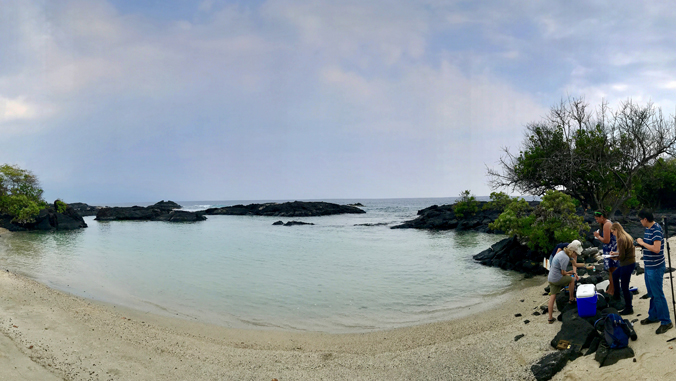
Depending on wastewater management choice, there could be economic and ecological consequences for Kona coast residents, tourists and the marine environment. The wastewater management findings by an interdisciplinary team from the University of Hawaiʻi Economic Research Organization (UHERO), Water Resources Research Center, Department of Earth Sciences and Department of Botany were published in Plos One on September 8.
Current situation
There are approximately 88,000 cesspools across the state, releasing more than 200,000 cubic meters of wastewater per day to the environment. Much of that wastewater enters into underlying groundwater systems and eventually into nearshore marine ecosystems. In response to environmental and public health risks, the Hawaiʻi State Legislature passed Act 125 in 2017, which requires that all cesspools in the state, unless granted an exemption, be upgraded to a septic or aerobic treatment unit, or connected to a sewer system by 2050.
Of the 88,000 cesspools, 6,500 have been identified in the Kailua-Kona area as having the potential to negatively impact coastal water quality and groundwater-dependent ecosystems (GDE). GDEs have historically served as important sources of water and food to Kona’s coastal communities and continue to be highly valued today. To address this issue, the researchers developed a comprehensive framework to evaluate the potential impacts of land use and wastewater management decisions on nearshore water quality and ecosystems along the Kona Coast.
Research results
Eight management scenarios were developed incorporating different combinations of future permitted developments, cesspool conversions and wastewater treatment plant (WWTP) upgrades. Researchers conclude that there will be potential detrimental impacts to the marine environment if no upgrades to cesspools or the WWTP occur. However, on the opposite side, converting all of the existing cesspools to aerobic treatment units and upgrading the existing WWTP to the highest quality provide the best protection to nearshore marine habitats at an estimated cost of $569 million in present value terms.
“When a suboptimal choice is selected among the kinds of scenarios presented here, resulting changes in coastal water quality and habitat quality may lead to reduced human enjoyment of some of Kona’s most prominent activities for residents and tourism industries, including nearshore snorkeling, scuba diving, shore fishing and spearfishing. In addition, such ecological changes can generate intangible costs for local residents, including unpleasant odors, as well as unappealing windrows of invasive species biomass that are costly nuisances and biological threats to native marine biota,” the research team said.
UHERO is in the UH Mānoa College of Social Sciences. Read more on UHERO’s website.
This work is an example of UH Mānoa’s goals of Building a Sustainable and Resilient Campus Environment: Within the Global Sustainability and Climate Resilience Movement (PDF) and Excellence in Research: Advancing the Research and Creative Work Enterprise (PDF), two of four goals identified in the 2015–25 Strategic Plan (PDF), updated in December 2020.

